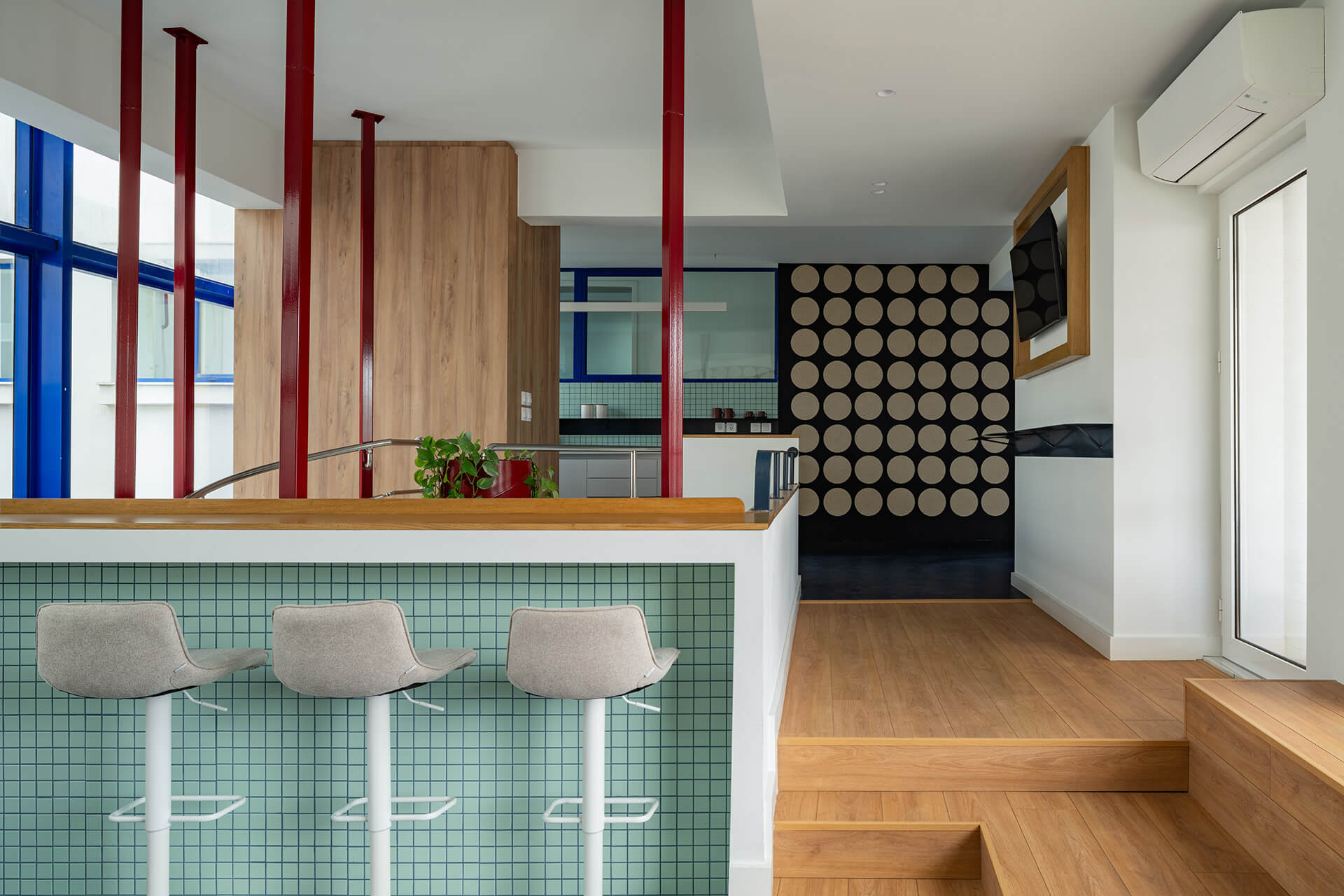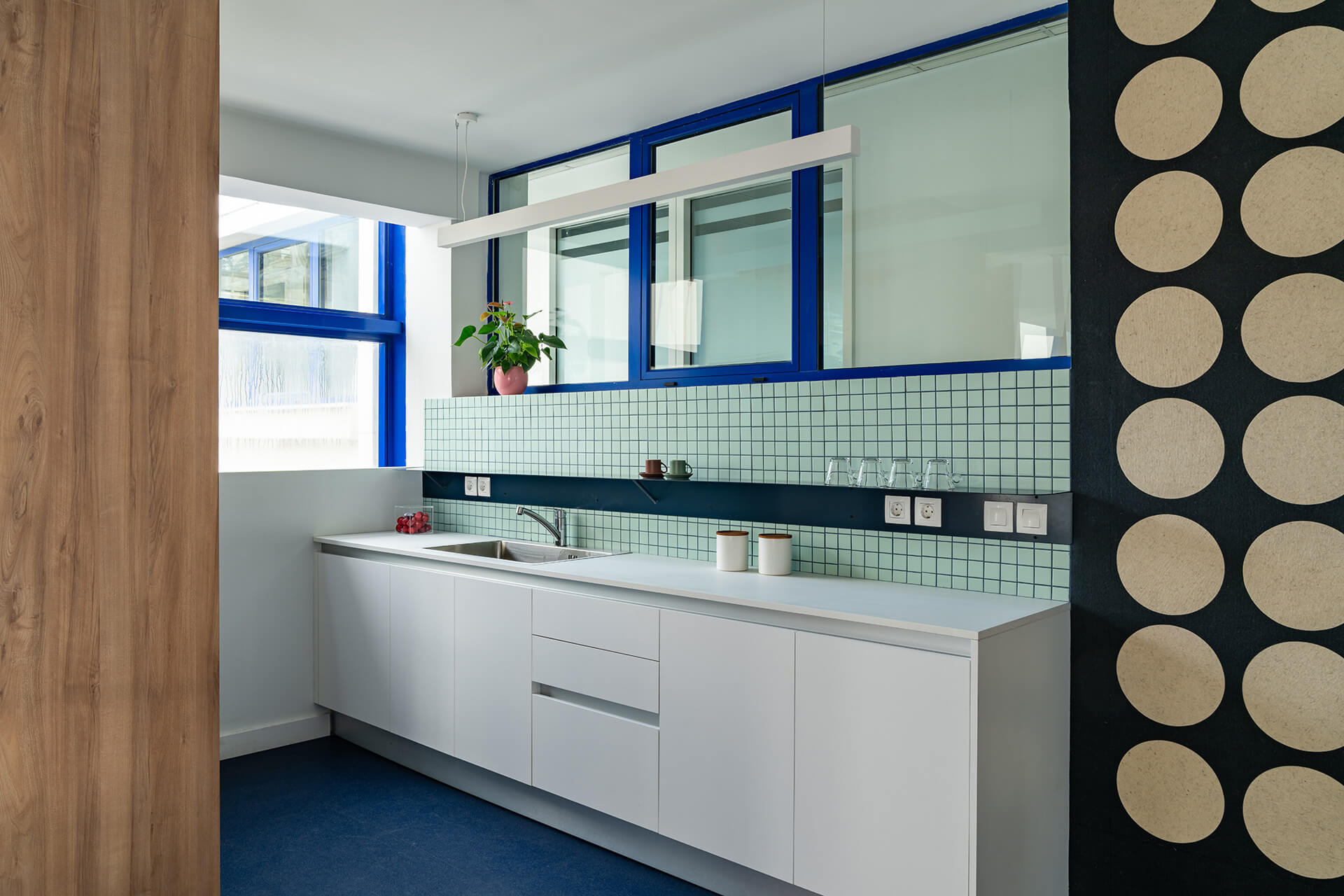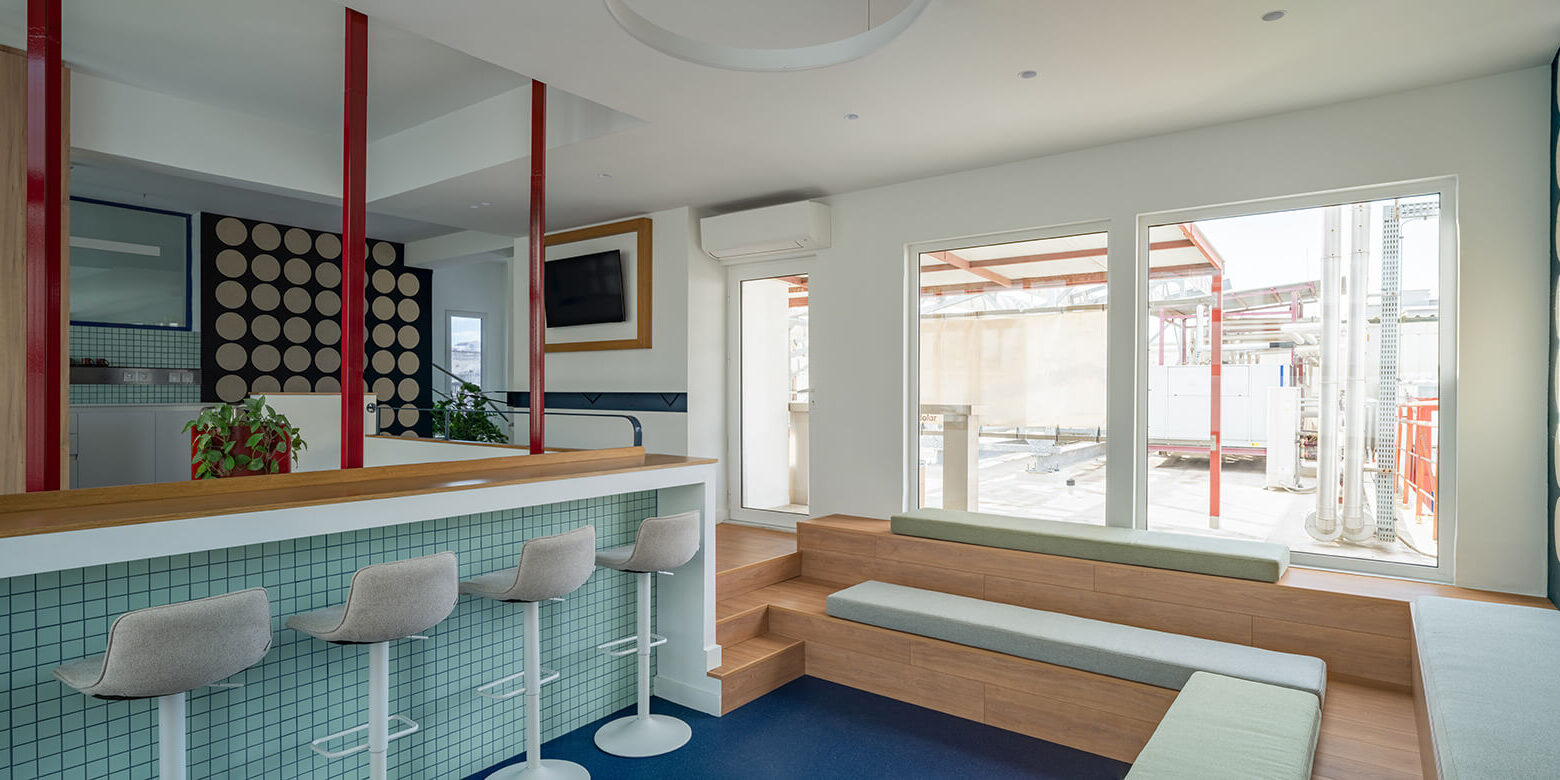Multifunctional layout
Within the building complex of Colgate-Palmolive’s factory and offices in Piraeus, the 55-square-meter top floor has been transformed into a lounge and break area for employees. This break room was created by repurposing a previously unused and inactive section, now reactivated through a thoughtful architectural intervention and its new designated function.
Design Philosophy
The space includes a shared kitchen, a bar-style counter, and amphitheater-style seating, forming a hybrid environment that bridges the gap between a traditional office and a casual relaxation area (such as a café or restaurant). This multifunctional layout accommodates a range of uses, from informal meetings and coffee or lunch breaks to short calls or even remote work sessions for both employees and visitors.
Prior to the intervention, the area partly served as a circulation zone between vertical movement axes (stairs and elevator), without any provision for pausing or staying. The remaining part housed a spacious office, occasionally used by external collaborators. The primary goal of the architectural design was to create a dedicated break area for Colgate-Palmolive’s staff -an inviting, collaborative space that fosters team spirit and strengthens communication among different departments.
The redesign of this break room seeks to revitalize a previously neglected area, transforming it into a dynamic hub for social interaction, relaxation, and flexible work. The design respects the existing structure while emphasizing natural light, quality materials, and ergonomic principles. The result is a space that enhances the sense of community within the workplace and offers employees a modern, welcoming, and multifunctional retreat during the workday.

Spatial Organization
The architectural concept was developed in the wake of the Covid-19 pandemic, a period when remote work had become the norm. As work models continue to evolve, the design aims to redefine how space and time are experienced in the workplace, responding to employees’ shifting needs throughout the day. The break room serves as a transitional, relaxing, and intimate space. Drawing from the familiarity of working from home, it offers a variety of settings to support different work modes. As a place of relief from the demands of daily tasks, the space is designed to support a sense of mental decompression. This is achieved architecturally through clean, minimalist lines, free of visual clutter, and further enhanced by ample natural light and materials that promote comfort -such as wood.

Materials & Custom Elements
The design incorporates a variety of seating options: bar seating for both standing and sitting, amphitheater-style seating for relaxed lounging, and a secluded single seat within the kitchen area. These options allow employees to personalize their break experience -whether they’re pausing briefly or settling in with a laptop for a longer stay- essentially bringing their workspace into the break room. The space is defined by a minimal, inviting, and vibrant aesthetic that balances functionality with contemporary design. Rather than erasing the existing environment, the new design works in harmony with it, using the current structure as a base for complementary rather than disruptive enhancements.
Key architectural features, such as the original red metal staircase and the bold blue window frames that define the building’s exterior, have been preserved and integrated into the new scheme. Against this backdrop, the design introduces balance by using white as a neutral canvas and incorporating dark blue in the flooring, metal shelving, and sound-absorbing panels that double as decorative wall elements. Warmth and a sense of familiarity are added through wooden finishes (on floors and cabinetry) and the use of earth-toned cushions and furnishings. A playful, refreshing touch is introduced through light blue tiles in the kitchen and bar areas -elements that serve both a practical function and contribute to the overall lightness and charm of the space’s “work zones.”






